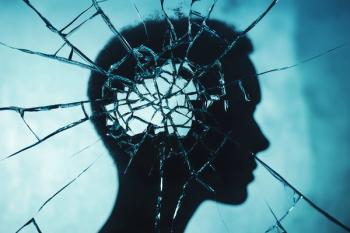
Analysis of Antipsychotic Dose-Response Prompts Proposal to Reduce Maximum Doses
A review and meta-analysis of antipsychotic dose-response literature prompts a proposal for lower maximum target doses.
The maximum target doses of antipsychotics in approved labeling are unnecessarily high, with less gain in efficacy than in adverse effects, according to findings in a new systematic review and meta-analyses.1
James O'Neill, MBChB, faculty of Medicine and Health at University of Leeds in Leeds, UK, and colleagues propose a new set of maximum target doses from their assessment of dose-response; and, for agents that are principally dopamine antagonists, correlating dose to striatal D2 receptor occupancy.
"Our proposed maximum doses are limits where, for the average person, further dose increases are unlikely to lead to any additional benefit on psychotic symptoms but may lead to worsening of side-effects," O'Neill explained to Psychiatric Times.
"Of course, some people will metabolize medications much faster than others, and those people may benefit from dosages higher than our recommendations," he observed."However, we would stress the importance of pharmacogenetic testing or therapeutic drug monitoring (TDM) in order to determine if this is required."
O'Neill acknowledged that antipsychotic doses are increased when there is incomplete therapeutic response, but suggests that other strategies should be considered when there is inadequate response at these proposed dosing levels.
"If there is no evidence of increased drug metabolism, but limited therapeutic response has been achieved by our proposed doses, we would recommend clinicians consider an alternative drug instead of increased the dose further," O'Neill said.
Establishing Maximum Dose for Efficacy, Not Toxicity
O'Neill and colleagues sought to determine maximum target doses based on efficacy rather than toxicity. They derived data from 2 meta-analyses of dose-response relationships,2,3 selecting doses that corresponded to peak response on the dose-response curves. In addition, the investigators considered dosing correlations with D2 receptor occupancy—particularly for the thioxanthenes commonly used in the UK—while recognizing that D2 occupancy and pharmacological profile differ considerably in other classes of antipsychotics.
Following are the peak effective dose, current daily maximum (per British National Formulary), and the daily maximum recommended by O'Neill and colleagues for selected agents in use in the US and UK:
- Aripiprazole, peak effective 16.1 mg, BNF maximum 30 mg, recommended 20 mg
- Haloperidol, peak effective 9.9 mg, BNF maximum 20 mg, recommended 10 mg
- Quetiapine IR, peak effective 407 mg, BNF maximum 750 mg, recommended 625 mg
- Quetiapine ER, peak effective 774 mg, BNF maximum 800 mg, recommended 800 mg
- Risperidone peak effective 10.3 mg, BNF maximum 16 mg, recommended 10.5 mg
O'Neill et al found an exception with olanzapine from reports that doses exceeding approved ceilings can be useful in treatment-resistant psychosis. "A lower maximum dosage for olanzapine cannot therefore be proposed," they reported.
Their recommended maximum doses come with several caveats. The investigators indicate that lower ceiling dosages may be appropriate for the elderly, referencing studies of reduced striatal dopamine receptors; and in females, with studies suggesting slower drug absorption, metabolism and excretion.
They also note that ethnicity could have an effect on dosing, as the required clozapine doses for Asian patients, for example, may be approximately 40% lower than in Black patients and 20% of that in White patients.
"However, it is also unclear whether ethnicity would have the same impact on other psychosis drugs as it does on clozapine," O'Neill et al wrote. "Real-world studies suggest that there is no significant difference in required does between varying ethnicity, but plasma level differences with ethnicity should be an area of further exploration."
The investigators also note that several factors, including cigarette smoking, can induce CYP450 enzymes and increase metabolism of some antipsychotics. "Doses for non-smokers may need to be between 25% and 40% lower than for smokers," they advise.
Pharmacogenetic testing has revealed genotypes that affect metabolism of antipsychotics, including variations in CYP2D6 metabolism of aripiprazole, risperidone, and haloperidol."For poor and intermediate metabolizers, there are recommendations for lower doses," O'Neill et al indicate. "For risperidone, it is recommended for ultra-rapid metabolizers that clinicians consider an alternative drug…”
O'Neill et al suggest that using pharmacogenetic testing or TDM could guide safer and more effective antipsychotic dosing. They recognize, however, that TDM is rarely employed, for reasons including variations in dose-response, as well as costs and the availability of testing facilities.
"It is true that there are many barriers to TDM at present, but plasma levels allow accurate determination of individual pharmacokinetics for specific drugs to accurately tailor dosing," the investigators indicate.
Dr Bender reports on medical innovations and advances in practice and edits presentations for news and professional education publications. He previously taught and mentored pharmacy and medical students, and he provided and managed pharmacy care and drug information services.
References
1. O'Neill JR, Jameson A, McLean SL, et al.
2. Leucht S, Crippa A, Siafis S, et al.
3. Sabe M, Zhao N, Crippa A, et al.
Newsletter
Receive trusted psychiatric news, expert analysis, and clinical insights — subscribe today to support your practice and your patients.













